
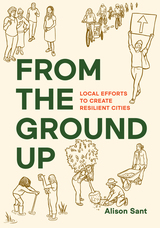
The efforts discussed in the book demonstrate how urban experimentation and community-based development are informing long-term solutions. Sant shows how US cities are reclaiming their streets from cars, restoring watersheds, growing forests, and adapting shorelines to improve people’s lives while addressing our changing climate. The best examples of this work bring together the energy of community activists, the organization of advocacy groups, the power of city government, and the reach of federal environmental policy.
Sant presents 12 case studies, drawn from research and over 90 interviews with people who are working in these communities to make a difference. For example, advocacy groups in Washington, DC are expanding the urban tree canopy and offering job training in the growing sector of urban forestry. In New York, transit agencies are working to make streets safer for cyclists and pedestrians while shortening commutes. In San Francisco, community activists are creating shoreline parks while addressing historic environmental injustice.
From the Ground Up is a call to action. When we make the places we live more climate resilient, we need to acknowledge and address the history of social and racial injustice. Advocates, non-profit organizations, community-based groups, and government officials will find examples of how to build alliances to support and embolden this vision together. Together we can build cities that will be resilient to the challenges ahead.

Paris is the most personal of cities. There is a Paris for the medievalist, and another for the modernist—a Paris for expatriates, philosophers, artists, romantics, and revolutionaries of every stripe. James H. S. McGregor brings these multiple perspectives into focus throughout this concise, unique history of the City of Light.
His panorama begins with an ancient Gallic fortress on the Seine, burned to the ground by its own defenders in a vain effort to starve out Caesar’s legions. After ninth-century raids by the Vikings ended, Parisians expanded the walls of their tiny sanctuary on the Ile de la Cité, turning the river’s right bank into a thriving commercial district and the Rive Gauche into a college town. Gothic spires expressed a taste for architectural novelty, matched only by the palaces and pleasure gardens of successive monarchs whose ingenuity made Paris the epitome of everything French. The fires of Revolution threatened all that had come before, but Baron Haussmann saw opportunity in the wreckage. No planned city in the world is more famous than his.
Paris from the Ground Up allows readers to trace the city’s evolution in its architecture and art—from the Roman arena to the Musée d’Orsay, from the Louvre’s defensive foundations to I. M. Pei’s transparent pyramids. Color maps, along with identifying illustrations, make the city accessible to visitors by foot, Metro, or riverboat.
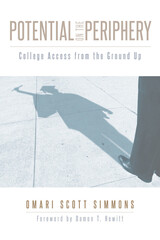
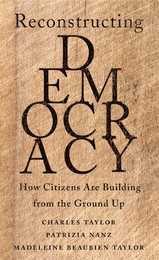
“An urgent manifesto for the reconstruction of democratic belonging in our troubled times.”
—Davide Panagia
Across the world, democracies are suffering from a disconnect between the people and political elites. In communities where jobs and industry are scarce, many feel the government is incapable of understanding their needs or addressing their problems. The resulting frustration has fueled the success of destabilizing demagogues. To reverse this pattern and restore responsible government, we need to reinvigorate democracy at the local level. But what does that mean? Drawing on examples of successful community building in cities large and small, from a shrinking village in rural Austria to a neglected section of San Diego, Reconstructing Democracy makes a powerful case for re-engaging citizens. It highlights innovative grassroots projects and shows how local activists can form alliances and discover their own power to solve problems.
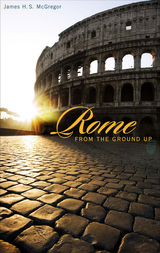
Rome is not one city but many, each with its own history unfolding from a different center: now the trading port on the Tiber; now the Forum of antiquity; the Palatine of imperial power; the Lateran Church of Christian ascendancy; the Vatican; the Quirinal palace. Beginning with the very shaping of the ground on which Rome first rose, this book conjures all these cities, past and present, conducting the reader through time and space to the complex and shifting realities--architectural, historical, political, and social--that constitute Rome.
A multifaceted historical portrait, this richly illustrated work is as gritty as it is gorgeous, immersing readers in the practical world of each period. James McGregor's explorations afford the pleasures of a novel thick with characters and plot twists: amid the life struggles, hopes, and failures of countless generations, we see how things truly worked, then and now; we learn about the materials of which Rome was built; of the Tiber and its bridges; of roads, aqueducts, and sewers; and, always, of power, especially the power to shape the city and imprint it with a particular personality--like that of Nero or Trajan or Pope Sixtus V--or a particular institution.
McGregor traces the successive urban forms that rulers have imposed, from emperors and popes to national governments including Mussolini's. And, in archaeologists' and museums' presentation of Rome's past, he shows that the documenting of history itself is fraught with power and politics. In McGregor's own beautifully written account, the power and politics emerge clearly, manifest in the distinctive styles and structures, practical concerns and aesthetic interests that constitute the myriad Romes of our day and days past.
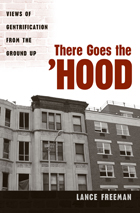
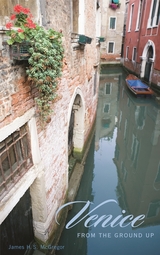
Venice came to life on spongy mudflats at the edge of the habitable world. Protected in a tidal estuary from barbarian invaders and Byzantine overlords, the fishermen, salt gatherers, and traders who settled there crafted an amphibious way of life unlike anything the Roman Empire had ever known. In an astonishing feat of narrative history, James H. S. McGregor recreates this world-turned-upside-down, with its waterways rather than roads, its boats tethered alongside dwellings, and its livelihood harvested from the sea.
McGregor begins with the river currents that poured into the shallow Lagoon, carving channels in its bed and depositing islands of silt. He then describes the imaginative responses of Venetians to the demands and opportunities of this harsh environment—transforming the channels into canals, reclaiming salt marshes for the construction of massive churches, erecting a thriving marketplace and stately palaces along the Grand Canal. Through McGregor’s eyes, we witness the flowering of Venice’s restless creativity in the elaborate mosaics of St. Mark’s soaring basilica, the expressive paintings in smaller neighborhood churches, and the colorful religious festivals—but also in theatrical productions, gambling casinos, and masked revelry, which reveal the city’s less pious and orderly face.
McGregor tells his unique history of Venice by drawing on a crumbling, tide-threatened cityscape and a treasure-trove of art that can still be seen in place today. The narrative follows both a chronological and geographical organization, so that readers can trace the city’s evolution chapter by chapter and visitors can explore it district by district on foot and by boat.

At the confluence of the Potomac and Anacostia rivers, President Washington chose a diamond-shaped site for the city that would bear his name, along with the burdens and blessings of democracy. Situated midway between North and South, the capital was also a gateway to the West--a contested wilderness where rough frontiersmen were already carving a divided nation.
With Indians on their borders and black slaves in their midst, the country's white founders struggled to embody, in bricks and stone, the paradoxical republic they had invented. Inspired by Greek and Roman models, city planners and designers scoured the Western world--from Hadrian's Pantheon to Palladio's Vicenza to the French Royal Academy--for an architectural language to capture the elusive principles of liberty, equality, and union.
Washington from the Ground Up tells the story of a nation whose Enlightenment ideals were tested in the fires of rebellion, removal, and resistance. It is also a tale of two cities: official Washington, whose stately neoclassical buildings expressed the government's power and global reach; and DC, whose minority communities, especially African Americans, lived in the shadows of poverty. Moving chronologically and geographically throughout the District, James McGregor reads this complex history from monuments and museums, libraries and churches, squares and neighborhoods that can still be seen today. His lucid narrative, accompanied by detailed maps and copious illustrations, doubles as a visitor's guide to this uniquely American city.
READERS
Browse our collection.
PUBLISHERS
See BiblioVault's publisher services.
STUDENT SERVICES
Files for college accessibility offices.
UChicago Accessibility Resources
home | accessibility | search | about | contact us
BiblioVault ® 2001 - 2024
The University of Chicago Press









